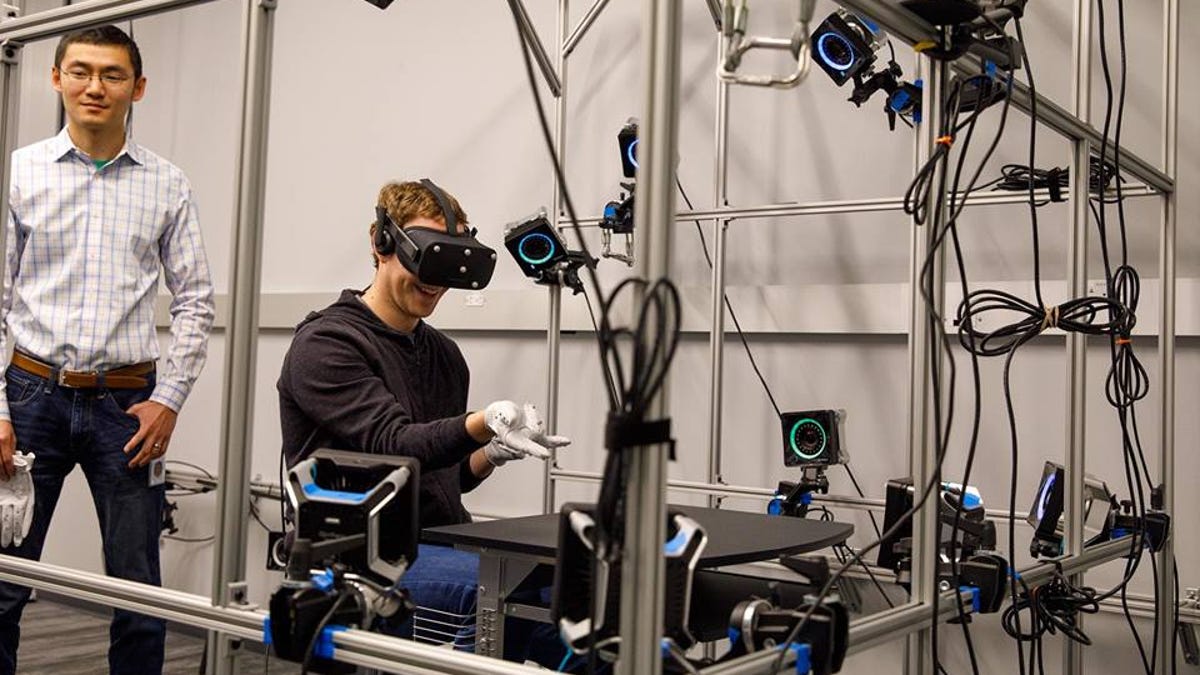Really hot stuff: AR and VR spending to double in 2017
It seems we're all especially keen on trying out games and entertainment in virtual reality.

Facebook's Mark Zuckerberg finds his inner Spider-Man with these gloves for finger tracking in VR.
Strap on a headset and you'll fuel a growing piece of the economy.
Worldwide spending on virtual reality and its cousin augmented reality could reach $13.9 billion in 2017, nearly half of that driven by consumers, according to a new forecast by market researcher IDC. That outlay, on AR and VR hardware, software and services, is expected to hit $143.3 billion in 2020, according to the report, released Monday.
A lot of that depends on you taking more and more of a shine to the emerging technologies, which let you immerse yourself in computer-generated worlds (VR) or project digital extras onto your surroundings (AR). You'll be able to choose from a growing array of gear, games and more from across the tech and entertainment industries.
Among the recent developments, HTC says it's creating a mobile VR device after the success of its Vive headsets. This week at the big Mobile World Congress show in Barcelona, Spain, Samsung is showing off a new Gear VR headset. VR also had some moments in the spotlight at the Sundance Film Festival earlier this year.
Augmented reality boomed into the mainstream in 2016 as Pokemon Go dominated app stores across Android and iOS.
Last year, spending on VR and AR amounted to $6.1 billion.
Games and entertainment will help VR hold a lead in 2017 and 2018, but AR spending will take over after 2018 as technology develops in areas such as health care delivery and product design, according to IDC.
"On the virtual reality side, producers are quickly moving beyond games to create new content mainstream audiences will embrace," Tom Mainelli, IDC's vice president of devices and AR/VR, said in a statement. "On the augmented reality side of the fence we're seeing commercial entities begin to more seriously evaluate the technology."
Correction, Feb. 27 at 8:49 a.m. PT: This story originally misstated the scope of AR and VR spending two and more years down the road. IDC expects combined spending on those technologies to reach $143.3 billion in 2020, with AR's share becoming dominant after 2018.
Tech Enabled: CNET chronicles tech's role in providing new kinds of accessibility.
Virtual reality 101: CNET tells you everything you need to know about what VR is and how it'll affect your life.

